0086-379-64087240
With more than 60 years of experience in ball mill grinding machine technology, As one of the ball mill manufacturers, CIC ball mill grinding machine is designed for consistent and dependable performance, as well as long life and minimum maintenance. Ores and various kinds of materials are ground typically to 35 mesh or finer in diverse applications, both in open or closed circuits. Inquiry ball mill for sale at wholesale price.
Reliable and effective grinding technology for diverse grinding mill machine applications
With more than 60 years of experience in ball mill China technology. CIC has designed, manufactured and installed over 500 sets ball mill equipment all over the world for a wide range of applications. Some of those applications are grate discharge, peripheral discharge, dry grinding, special length to diameter ratio and more.
Long life and minimum maintenance
CIC designed ball mill grinding machine with long-term operation in mind with a minimum need for maintenance to help you get the most of your business.
Efficient operation through Intelligent Grinding Expert System
CIC's unique intelligent grinding expert system ensures that your ball mill grinding machine can be operated in a labor-saving, efficient operation and safe manner.
Professional support system
CIC has a professional after-sales support system. We have a strong technical team ready to guide and answer all your questions and difficulties during the operation. In the pre-sale CIC can also provide on-site measurement services and with type selection design.
Testing capabilities
In order to control the machining and installation accuracy, especially during the operation of the ball mill China, CIC will choose testing instrument to carry out "physical examination" on the running condition and measure the coaxiality and level difference of the bearing parts at both ends of the ball mill China.
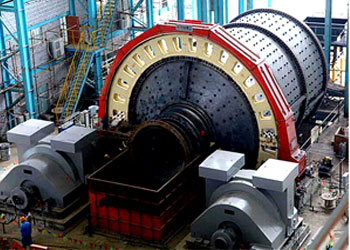
The wet grate mill is suitable for the grinding of coarser ores. Rolling bearings are used during operation, which has higher efficiency.
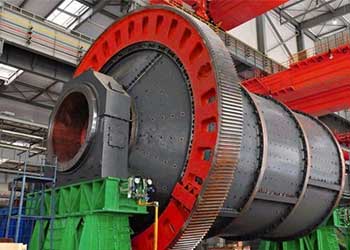
A dry ball mill is not only suitable for various metal and non-metal ores but also can use a dry ball mill to save water when the concentrator is located in an arid area.
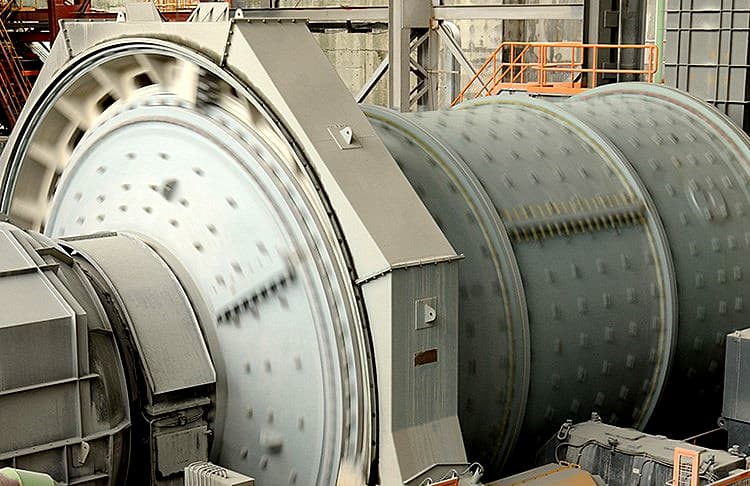
1.Both wet and dry grinding can be used
The ball mill grinding machine can be used for both wet and dry ball mill grinding, which mainly depends on the operation. Wet grid ball mill includes a certain amount of water or similar liquid to increase the fluidity of materials to be crushed. On the other hand, in the dry grinding process, the flow capacity of materials will be affected. Therefore, the flow ability needs to be improved. This is usually achieved by adding an air suction device at the outlet of the ball grinding machine. However, both wet and dry grinding need to be carried out at low speed, which is also known as the critical speed of ball mill grinding machine.
Dry and Wet Ball Mills: What Materials Are They Suitable for Respectivey?
2.Efficient For Secondary Grinding
The ball mill grinding machine is very effective for the secondary grinding after crushing. The ball mill equipment can grind all kinds of ores and other hard materials. In addition, primary grinding and secondary grinding with ball mill grinding machine can be applied to various industries.
3.Simple and reliable operation
The china ball mill grinding machine is a reliable and easy tool for operation in spite of the effective and powerful grinding. The china ball mill machine has a very simple construction, yet simple working principle which certainly guarantees easy operation.
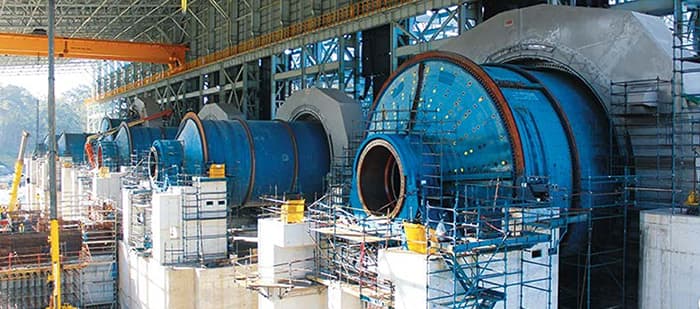
The ball mill equipment is a kind of grinding equipment which grinds materials into fine powder in a very efficient manner. The ball mill grinding machine is considered as the one of the most important grinding equipment for crushing materials, because it can be used for grinding all kinds of materials, such as cement, ores, silicates, pyrotechnics, fertilizer, glass ceramics and many other hard materials.
The ball mill grinding machine is a versatile and efficient tool for grinding and blending materials in various industries. Its application extends across a wide range of processes, including cement production, mineral processing, ceramics, pyrotechnics, and many more. In this article, we will explore the diverse applications of the ball mill grinding machine and its significance in modern manufacturing.
One of the primary applications of the ball mill grinding machine is in the field of cement production. Cement is a crucial building material that forms the foundation of structures, and the grinding process is essential for producing the desired consistency and quality. The ball mill is used to grind and blend clinker, a granular material produced during the cement kiln stage, with gypsum and other additives to form the final cement product. The machine ensures a fine and homogeneous grind, resulting in the desired particle size distribution and setting properties of the cement.
In the mineral processing industry, the ball mill grinding machine plays a pivotal role in comminution processes. Comminution refers to the size reduction of materials through crushing and grinding operations. The ball mill efficiently grinds ores and other materials, such as limestone, granite, and quartz, into fine powders or slurry. These ground materials are further processed, allowing for the extraction of valuable minerals. Additionally, the ball mill can be used for wet or dry grinding, making it adaptable to various mineral processing operations.
The ball mill grinding machine finds significant applications in the ceramics industry as well. Ceramic materials, such as porcelain, stoneware, and earthenware, are widely used in the production of pottery, tiles, and sanitaryware. The ball mill enables the grinding and blending of ceramic powders, clays, and other raw materials, leading to the formation of uniform and homogeneous ceramic bodies. The precise control over particle size achieved through ball milling ensures the desired properties, such as strength, color, and texture, in the final ceramic products.
Another notable application of the ball mill grinding machine is in the field of pyrotechnics. Pyrotechnics deals with the science and art of creating fireworks, explosives, and propellants. The ball mill is a crucial tool for producing finely ground powders of chemicals and compositions used in pyrotechnic formulations. It allows for controlled milling and blending of explosive materials, ensuring the desired burn rate, stability, and performance characteristics of the pyrotechnic products.
Apart from these specific applications, the ball mill grinding machine has broader significance in modern manufacturing processes. Its ability to grind and blend various materials with high precision and efficiency makes it indispensable in research laboratories, where material characterization and formulation are essential. Moreover, the ball mill finds application in pharmaceutical industries for the production of powdered drugs, in food processing for grinding spices and ingredients, and in the chemical industry for the preparation of various chemical compounds.
In conclusion, the ball mill grinding machine is a versatile and vital tool in various industries. Its applications range from cement production and mineral processing to ceramics and pyrotechnics. The machine's ability to grind and blend materials with precision and efficiency contributes to the production of high-quality products across different manufacturing sectors. As technology advances, the ball mill grinding machine continues to play a crucial role in shaping modern manufacturing processes.
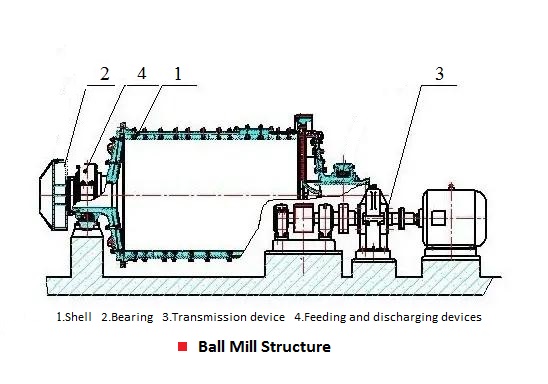
1. Shell: the shell is the main part of the ball mill equipment. It is a circular device made of a certain thickness of steel plate welded. When working, it not only bears the static load of its own grinding medium, but also the alternating stress caused by the rotation of the shell body impacted by the grinding medium. Therefore, it must have sufficient strength and stiffness.
2. Bearing: the bearing is the supporting part of the ball mill equipment, bearing the mass of the rotating part of the China ball mill and the impact load of the grinding medium. Moreover, using rolling bearings instead of sliding bearings has small running resistance and significant energy saving. It is also necessary to do a good job in lubrication, heat dissipation and so on.
3. Transmission device: the ball mill equipment is a heavy-duty, low constant speed machine. Generally, the transmission device is divided into two forms: edge transmission and center transmission, including motor, reducer, transmission shaft, pinion and triangle belt of edge transmission, etc.
4. Feeding and discharging devices: the feeding and discharging devices of the China ball mill grinding machine are mainly composed of end caps with hollow journals, combined feeders, fan-shaped liners, journal inner sleeves and other components.
The China ball mill machine is driven by the motor to rotate the shell by starting the clutch (or reducer) and the gear transmission device. When the shell rotates, the grinding medium steel ball installed in the shell is lifted to a certain height with the rotation of the shell under the action of friction and centrifugal force, and then thrown down at a certain linear speed, The abrasive materials are crushed by the impact of falling steel balls and the crushing and grinding stripping between steel balls and between steel balls and mill liner.
The ball mill grinding machine operates on a fundamental principle that involves the rotation of a cylindrical vessel containing grinding media such as balls, rods, or pebbles. This rotational motion causes the media to collide with and grind the material being processed, resulting in the reduction of its particle size. In this article, we will delve into the working principle of the ball mill grinding machine and its key components.
The primary component of the ball mill is the cylindrical vessel, often called the drum or shell. It is generally made of steel and is partially filled with the grinding media. The inner surface of the drum is typically lined with abrasion-resistant materials such as rubber or metal, to protect it from wear and tear caused by the grinding process.
As the ball mill begins to rotate, the grinding media inside the drum are lifted to a certain height and then cascade down or drop onto the material being processed. This action generates a crushing and grinding effect on the material, resulting in its reduction in size. The size reduction occurs due to the impact and friction between the grinding media and the material, as well as the impact between the material particles themselves.
The critical speed of the ball mill is an important parameter that determines the efficiency of the grinding process. It refers to the rotational speed at which the centrifugal force generated by the rotating drum is equal to the gravitational force acting on the grinding media. At this speed, the grinding media are in a state of centrifugal motion, and the grinding process is optimized for efficient particle size reduction.
The ball mill grinding machine can operate in either a wet or dry state. In the wet grinding process, a slurry of the material being processed and water is fed into the drum. The addition of water helps to disperse the material and create a favorable environment for efficient grinding. On the other hand, in dry grinding, the material is fed into the drum without any liquid, and the grinding media generate the necessary impact and friction for size reduction.
To control the particle size distribution of the ground material, the ball mill grinding machine is equipped with a classification system. This system separates the finer particles from the coarser ones and returns the oversize material back to the mill for further grinding. Common classification mechanisms include screens, hydrocyclones, or air classifiers.
The power input to the ball mill grinding machine is provided by a motor through a gear mechanism. The motor drives the drum to rotate, and the gear mechanism ensures a smooth and controlled operation of the machine. The motor power and the size and type of grinding media used are important factors that influence the grinding efficiency and the final product quality.
In conclusion, the ball mill grinding machine operates on the principle of size reduction through the impact and friction between the grinding media and the material being processed. The rotational motion of the drum and the movement of the grinding media generate the necessary forces for particle size reduction. The working principle of the ball mill, along with its key components, including the drum, grinding media, classification system, and power input mechanism, contribute to its efficient and effective operation in various industries.
